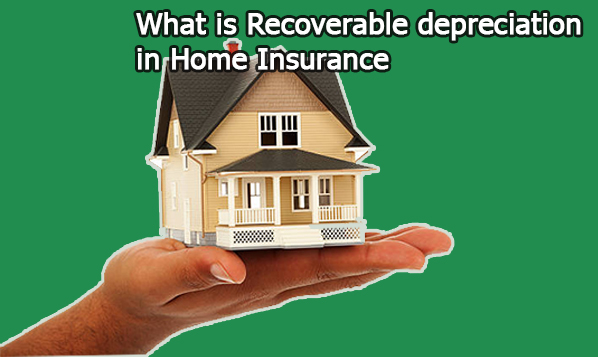Recoverable depreciation is a feature in home insurance policies with replacement cost value (RCV) coverage. With the help of this insurance, the initial payout is for the item’s value that has depreciated. Once you have repaired or replaced the item and provided proof, the insurer will pay you the difference between the depreciated value and the full replacement cost. The difference is then referred to as recoverable depreciation in home insurance.

Understanding Recoverable Depreciation In Home Insurance
Just as I have mentioned above, Depreciation accounts for the declining value of items over time. For example, when your business purchases new equipment, its value is reduced annually in the books. The same goes for homeowners insurance. Policies assign a value to your house and its contents, which decrease in value over time due to wear and tear. This lost value is called depreciation.
If your home is damaged, you may receive a payout based on the actual cash value (ACV), which is less than the replacement cost. However, with a recoverable depreciation clause, you can claim the depreciated amount in home insurance, making up the difference between ACV and replacement cost.
How Is Recoverable Depreciation in Home Insurance Calculated
When you make a home insurance claim under “replacement cost coverage,” your insurance company will first calculate the actual cash value (ACV) of the damaged or destroyed item
Actual Cash Value Reimbursement
If an item is damaged (e.g., by fire) or stolen, an insurance adjuster will determine its ACV. This value accounts for depreciation, including age, expected lifespan, and wear and tear. For example, if you purchased a computer for $2,000 three years ago and it was stolen, and the laptop’s expected lifespan is five years, it has depreciated by 60%, or $1,200. The ACV would then be $800 ($2,000 – $1,200).
Your deductible also applies to the claim. If your deductible is $500, your insurance check for the laptop’s ACV will be $300 ($800 ACV – $500 deductible).
Recoverable Depreciation In Home Insurance Payment
Without replacement cost coverage, you’ll only receive the ACV minus the deductible. With replacement cost coverage, your insurer issues a first payment for the ACV so you can start repairs or replacement. After replacing or repairing the item and submitting the receipt, you will receive a second payment for recoverable depreciation.
If you don’t replace the item, you won’t receive the second payment. For instance, if a fire destroys a chair and you choose not to buy a new one, you’ll only get the ACV for the original chair.
How to Make a Recoverable Depreciation In Home Insurance Claim
Do you want a home insurance claim a Recoverable Depreciation claim? Here’s how to do that;
- Report the damage to your insurance provider as soon as possible.
- Gather the required paperwork, including invoices, police reports, and pictures.
- Submit your claim form and supporting documents to the insurer.
- Wait for the processing of your claim.
- Get your initial payment for the actual cash value (ACV) of the item.
- Mend or swap out the object.
- Send the insurer the receipt for the replacement or repair.
- Get your second reimbursement for depreciation that is recoverable.
If you disagree with your insurance company on the assessment, you can negotiate the value of your recoverable depreciation check. Also, you can easily request a detailed breakdown of values instead of a lump sum to know more about the evaluation of each item.
Who Needs Recoverable Depreciation In Home Insurance
Going for a policy that has recoverable depreciation can provide higher reimbursement for your belongings, but it usually comes with a higher premium compared to a policy that only covers actual cash value (ACV). If your policy just covers ACV, you might not get enough to replace or repair items at today’s prices. With recoverable depreciation, after you repair or replace the damaged items, you will get a payout for the depreciation amount, which can help cover costs without you having to pay out-of-pocket/ deductible. This makes recoverable depreciation a good choice if you want to avoid extra charges after making a claim.
What Is Non-Recoverable Depreciation
Non-recoverable depreciation is when an item’s value decreases over time that your insurance won’t cover. You will be paid the current depreciated value rather than the full replacement cost if your homeowners’ insurance policy only covers depreciation that cannot be recovered.
For example, if you purchase a laptop for $5,000 and it’s now worth $1000 due to depreciation, your insurance might only pay the depreciated value minus your deductible. If your deductible is $500, you’d receive $500 You should check policy details always. Nonrecoverable depreciation might apply if certain conditions aren’t met (such as replacing or repairing the item within a specific timeframe).

